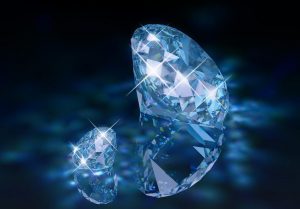A ceramic is basically:
- A finely ground inorganic powder.
- Which maybe heated, fired or sintered.
- Sometimes compressed to produce a polycrystalline solid.
- In some cases, a binding agent with a low melting point is used to hold the particles together.
- The surface maybe glazed.
- In all there are three main stages – grinding, precipitation and / or compressing.
- Most of the ceramic products are not true synthetics since they do not have the exact chemical composition of the natural product which they simulate.
- Constituents used might be powders of the natural substance itself (reconstructed) or totally different chemicals.
Gemstones made by this method are:
- Lapis Lazuli: (Gilson) Available with or without pyrite, lower S.G. of 2.46 and lower hardness of 4.5. Very even surface texture.
- Turquoise: (Gilson) Available with or without matrix, slightly porous, under magnification dark blue particles observed in a white background.
- Coral: (Gilson) Smooth texture, lack of pores and tree ring structure, lower S.G.
- Jade: (General Electric) Initially made in 1984, but has not been commercially produced.
- Yttralox: Used as a diamond simulant, is transparent, hardness is 6.5, R.I. of 1.92, dispersion of 0.039.



























Leave a Reply
You must be logged in to post a comment.